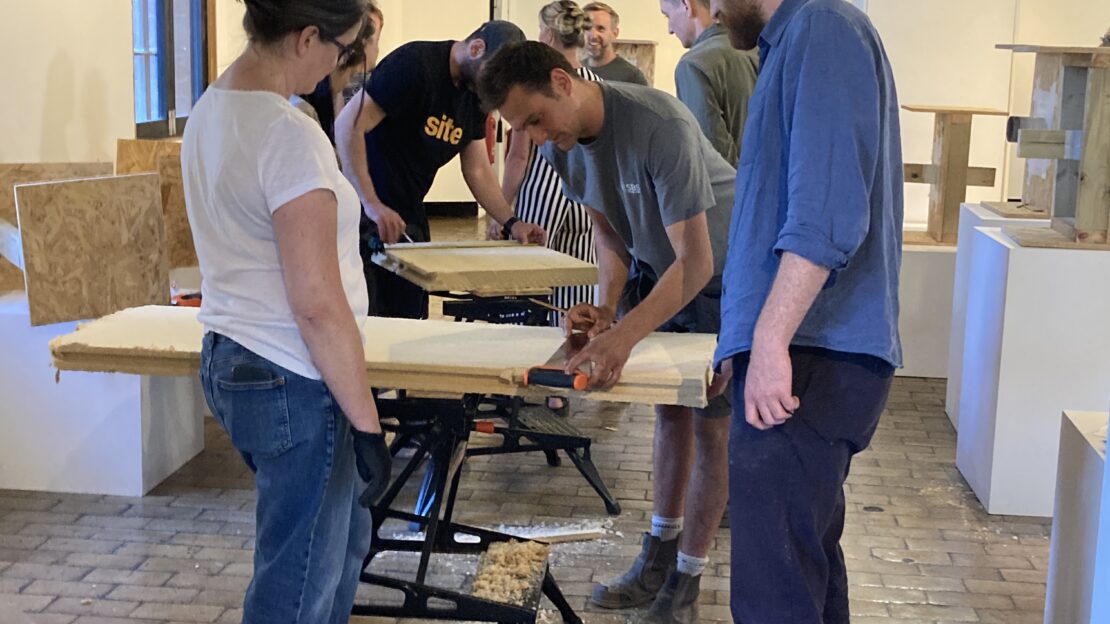Why is retrofit training in demand? Retrofit training is in high demand because the UK must upgrade existing buildings to meet Net Zero targets, cut energy bills, improve year-round comfort, comply with stricter housing regulations, and meet growing market demand for skilled retrofit professionals.
But these are just the headlines. The real reason lies in how each factor is shaping the construction industry today and creating opportunities for builders, contractors, plumbers, electricians, and even architects.
The UK’s Net Zero Commitments and Climate Targets
The United Kingdom has legal commitments to reach Net Zero by 2050 and a 68% reduction in emissions by 2030. According to the Green Building Council, the UK’s housing stock accounts for a quarter of the UK’s greenhouse gas emissions. Around half of our housing stock in England and Wales don’t currently reach an energy performance certificate rating of C or above, and estimates show that, by 2050, 80% of the UK’s current housing stock will still be in use. Houses will therefore have to be made more energy efficient and use a more environmentally friendly method of heating, like a heat pump.
There is certainly no other way for emissions caused by housing to be reduced than by retrofitting the houses that are draughty, poorly ventilated and insulated, and use gas boilers.
In fact, in 2020, the UK Energy Research Centre estimated that half of the UK’s 29 million homes would need to be retrofitted. That’s 14,500,000 homes that must be retrofitted by 2050, or 580,000 homes per year.
Why Retrofit Training Is in Demand in the UK
Retrofit training is in high demand in the UK because the nation faces urgent environmental targets. Rising energy costs are also driving demand. Plus, housing rules are getting tighter. The retrofit market is growing rapidly too.
Most buildings that will exist in 2050 are already built. This means we must upgrade them for energy efficiency and comfort. But there aren’t enough skilled workers. We need more professionals who can deliver high-quality retrofit work.
The UK’s Net Zero Commitments and Climate Targets
The UK has a legal duty to reach Net Zero carbon emissions by 2050. How do we get there? By retrofitting existing homes and commercial buildings.
This means improving:
- Insulation
- Ventilation
- Airtightness
- Heating systems
Rising Energy Costs and Fuel Poverty
Energy prices have soared in recent years. This has pushed many households into fuel poverty. This is where people spend a large chunk of income on heating and powering their home.
Retrofit upgrades can cut bills by improving efficiency. Demand is growing for installers who can deliver these cost-saving measures. As of 2022, there were only 506 Retrofit Coordinators in the UK but a nation-wide demand of 1,000,000 homes needing to be retrofitted per year. The UK’s Climate Change Comittee recommends that there be 30,0000 Retrofit Coordinators by 2028, just three years from now. That’s a growth of over 5800%.
Contractors and tradespeople who learn retrofit skills are in a better position. They can meet this need and get more work.
Improving Comfort Year-Round
Retrofit work does more than keep homes warm in winter. It also helps keep them cool in summer.
Measures such as shading, ventilation, and better thermal performance prevent overheating, which is becoming a bigger problem due to climate change. This broader comfort benefit is increasingly recognised by property owners, further driving demand for skilled retrofit professionals.
There is potential that, in coming years as climate change worsens, comfort in extreme temperatures may even change the housing market as buyers might prefer a home that is suitable for the climate.
Regulatory Changes Driving Retrofit Work
New rules are making retrofit skills essential:
Minimum Energy Efficiency Standards (MEES): These set strict EPC requirements for rental properties. The standards keep getting tougher. They minimum is likely being raised to an EPC rating of C, and there is proposed legislation to suggest that this will even affect the ability to sell a home after 2030.
Awaab’s Law: This creates new duties for social landlords. They must tackle hazards like damp and mould quickly. 7% of social-rented homes are reported to have mould and damp problems.
Remediation Acceleration Plan: These are government schemes to speed up repairs and energy improvements. This plan particularly affects cladding, which can be part of external wall insulation.
These rules mean property owners must act. If they don’t, they face penalties. This makes trained retrofit professionals more sought-after than ever.
The Commercial Opportunity in Retrofit
The UK retrofit sector will grow a lot over the next decade. Apart from everything mentioned so far, there are several other factors creating a strong and profitable market:
- Government incentives
- Consumer awareness
- Long-term savings and ROI that retrofitting a home can offer
Skilled tradespeople can benefit from this growth. Those with accredited retrofit training like Retrofit Skills gain an edge over competitors. This opens doors to high-value projects and repeat work.
Summary
Retrofit training is in demand for several reasons:
- It aligns with the UK’s climate goals, and in fact is necessary to achieve them
- It cuts energy bills, leading to a return-on-investment
- It improves comfort, which is more important than ever due to climate change
- It ensures compliance with future and current laws
For contractors, builders, and related trades, skills in retrofit are no longer optional. They’re the key to staying competitive in a fast-changing construction landscape.
Get ahead quickly with Retrofit Skills
Retrofit Skills Level 2 is an accredited qualification that aims to teach you the fundamentals of domestic retrofit. Taught by industry leaders, upon finishing this hybrid course you’ll gain a recognised Level 2 qualification, among other benefits.

